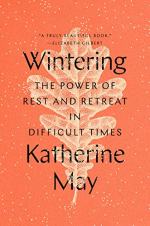|
This section contains 612 words (approx. 2 pages at 400 words per page) |

|
Wintering Summary & Study Guide Description
Wintering Summary & Study Guide includes comprehensive information and analysis to help you understand the book. This study guide contains the following sections:
This detailed literature summary also contains Topics for Discussion on Wintering by Katherine May.
The following version of this book was used to create this study guide: May, Katherine. Wintering, “The Power of Rest and Retreat in Difficult Times.” Riverhead Books, an imprint of Penguin Random House LLC. First American Edition. 2020.
The book’s content is divided into seven sections, defined by a chronological progression through the months of September – March. The contemplations in each section, however, are not consistently or explicitly tied to literal experiences associated with each month, but are instead more generalized and/or universal in both content and perspective. In this analysis, when the word wintering appears in quotation marks, it refers to the author’s concept of “wintering” as a state of mind, rather than the experience of preparing for, and living through, physical winter.
The book begins with a Prologue, in which author May discusses a sense of impending change that emerged into her consciousness one September. She also discusses the identity-based reasons that she is particularly sensitive not only to change, but to the experience of withdrawal associated with change. She defines that experience as “wintering,” a time of chosen semi-seclusion and contemplation. She parallels this concept, here and throughout the book, with the experience of semi-seclusion and opportunity for contemplation triggered by the challenging cold and darkness of climate-defined winter.
The book then moves into a series of contemplations of different aspects of “wintering.” Some of these contemplations are triggered by specific events defined by their month-by month chronology. For example, the first chapter of the book proper is focused on thoughts and experiences connected with, or triggered by, the month of October. At one point in this chapter, May considers the experience of Halloween, looking at its origins and contemporary values both in terms of her immediate situation and in terms of broader, societal perspectives. This is one of several places in the narrative in which May’s explorations are triggered by, and connected to, her experiences as a parent. The drawing and investigating of this connection become one of the book’s thematically significant, motifs, or repeated images.
As the book continues to move through the months, May’s considerations move between general considerations of “wintering” and specific meditations associated with a particular month. In the section titled “November,” for example, her focus is on the experience of change in general and on experiences of sleep. Here as elsewhere in the book, there is a sense of implied, extended metaphor, as the author’s consideration of what sleep means physically offers symbolic suggestions of what it can mean psycho-emotionally. In contrast, the section titled “December” contains detailed references to Christmas and the New Year.
As the book’s structure moves into the months of January and February – often colloquially referred to as “the dead of winter” – author May’s focus is on darknesses associated with both physical and psycho-emotional winter. There are, however, also references to hope, healing, and even beauty that can be found in experiences of “wintering.” Finally, as the chronology of the narrative moves into March, May’s comments and contemplations focus on different aspects of returning life, both referencing the coming of physical and psycho-emotional spring.
The book concludes with an Epilogue, in which May further considers the sense of new beginning associated with the month of March. That sense, as she describes it, is infused with the wisdom and insight she has found as a result of her experience of “wintering.” There is a clear sense, as the book concludes, that that wisdom and that insight are connected to her experience-based belief that “wintering” is something of an inevitable psycho-emotional season, just like winter is an inevitable climate-defined season.
Read more from the Study Guide
|
This section contains 612 words (approx. 2 pages at 400 words per page) |

|



